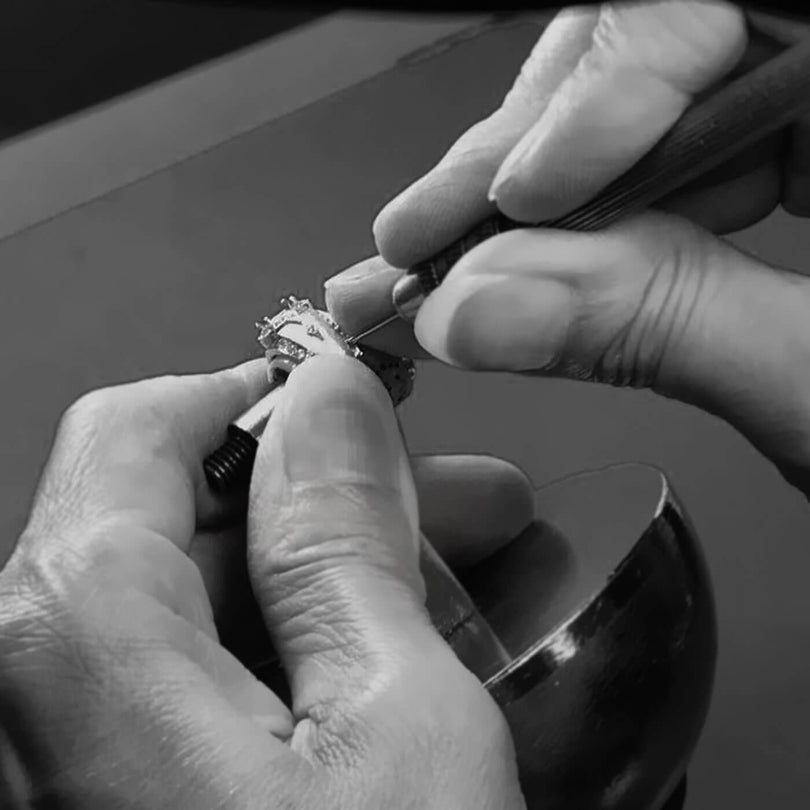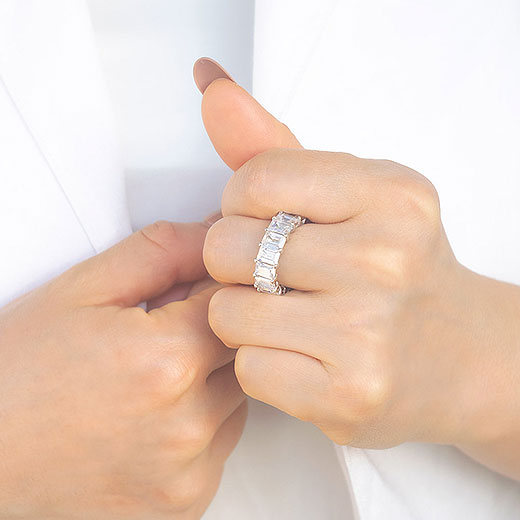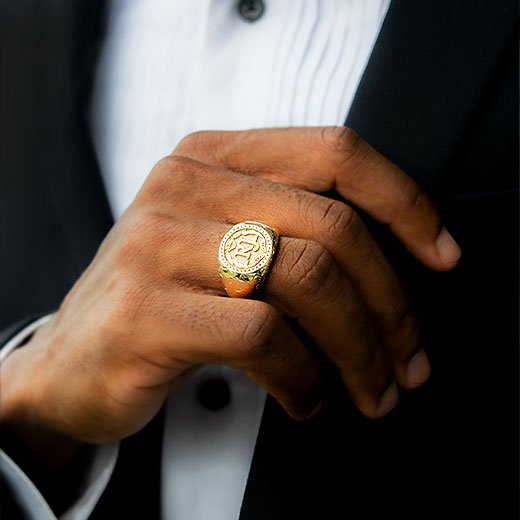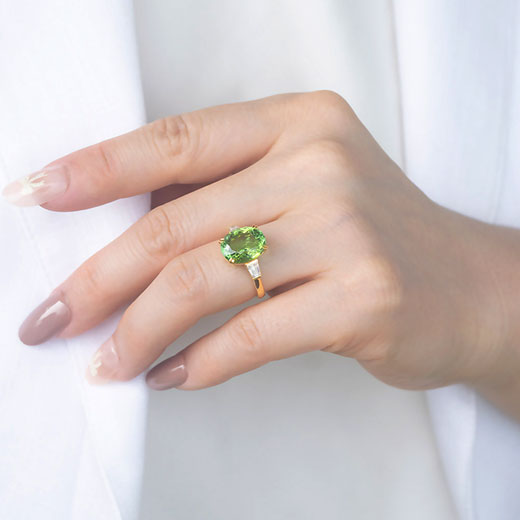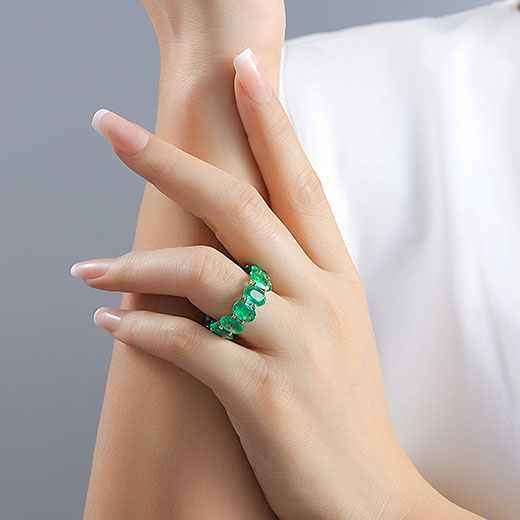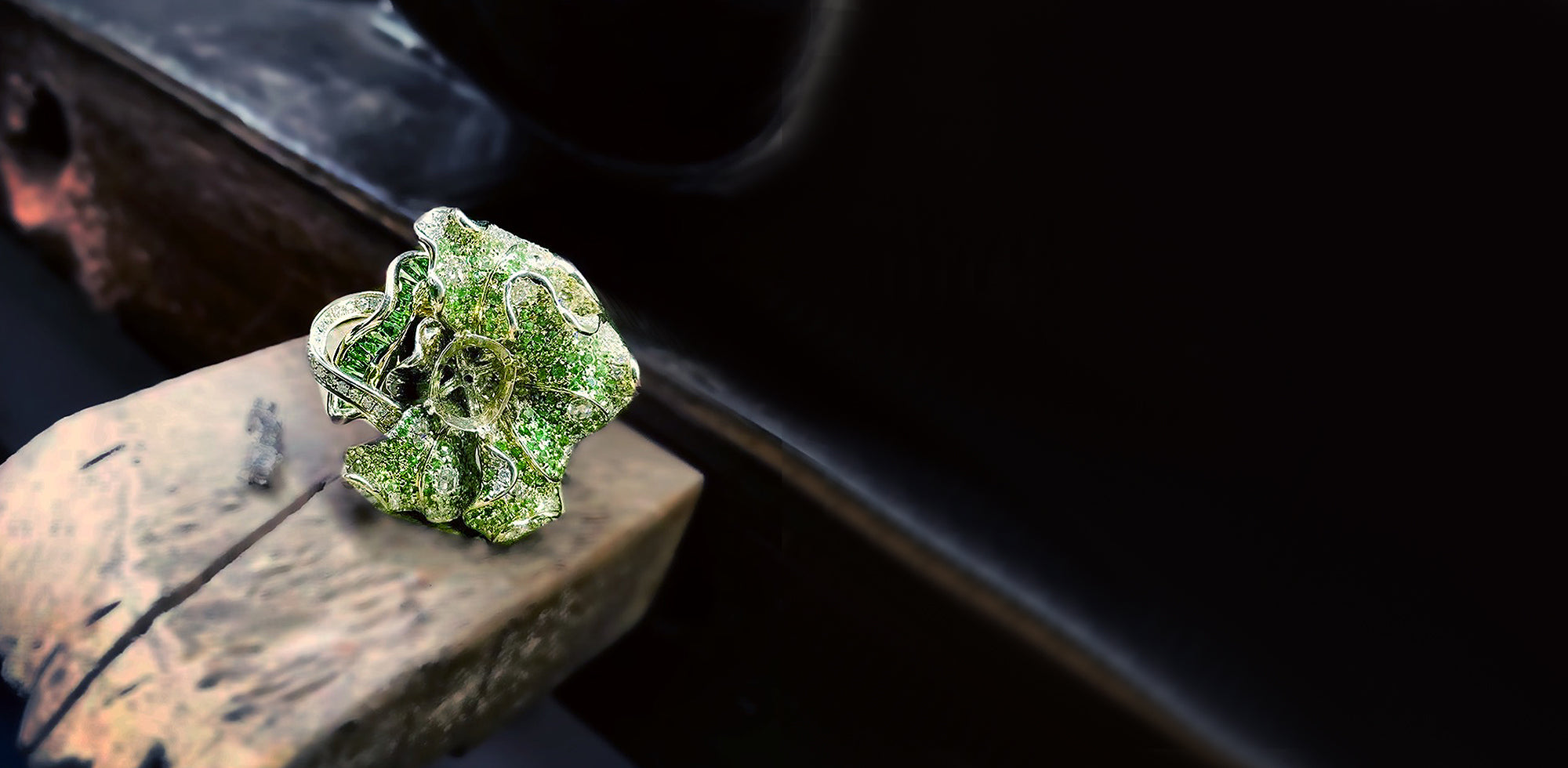Outline
Opal is a stunning semi-precious gemstone that has captivated people for generations thanks to its unique beauty. It's known for its vibrant color play, which has been compared to the galaxy, a rainbow, and fireworks. The term 'play-of-color' refers to an optical phenomenon in which a gem flashes multiple hues and patterns when moved or as a result of a light reaction. This feature distinguishes each opal from the others.
This magnificent gem is closely connected to the quartz crystal, and it contains millions of small amorphous silica spheres in its chemical composition. These spheres lead the stone to diffract light and take on a variety of colors depending on the angle from which it is seen. The opal's color is determined by the quantity of various minerals incorporated within the stone, in addition to the size of the silica spheres. As a result, this stone comes in a wide range of colors, including black, brown, pink, red, blue, white, and others.
While opals with green, white, or blue tones are widespread, those with black or red tones are extremely unusual. Although most opals are opaque, some can be found to be more transparent than others. Boulder opal, black opal, white opal, matrix opal, crystal opal, and fire opal are some of the most common forms of naturally occurring opals.
Synthetic and imitation opals, like all gems, are available on the market, but widely available and naturally occurring opals are preferred. Australia produces over 97 percent of the world's opal, and it is also the country's national stone. This gem can also be found in Mexico and a number of other locations across the world.
Symbolism
There aren't many gemstones with as extensive a legend as an opal. Opal has long been thought to be a powerful stone that induces mystical vision and boosts creativity.
The Aboriginal tribes of South Australia's Andamooka region considered that an opal was created from a rainbow given to the earth by the creator of Dreamtime, a phrase used by Aborigines to define the world's natural, spiritual, and moral components. After conveying to mankind his desire for eternal peace, the creator returned to heaven. The rock he was standing on absorbed all of the rainbow's colors and transformed into a stunning opal.
Opal was connected with fidelity, hope, and purity by the Romans, while the early Greeks thought it could predict the future. Opal was treasured as a precious stone in East Asia, and Arabs believed it came from heaven.
When novelist Sir Walter Scott's novel "Anne of Geierstein" was released in 1829, this stone's popularity plummeted. According to the story, opal is evil and wearing it will bring bad luck. It is thought to have led the opal market to crash, with the gem's price plummeting by nearly half.
When Queen Victoria of England laughed at the superstitions surrounding the stone, it regained appeal in a short amount of time. Among the notable opal enthusiasts were her and Napoleon Bonaparte. The Queen was reported to be so captivated by the stone that she gave it to her daughters as wedding gifts. Opal's stunning beauty continues to entice people today.
Properties
Hardness and Strength
Opals are soft and have a hardness value of 5.5 to 6.5 on the Mohs scale, making them vulnerable to scratches and breaking. If shallow crazing (surface cracks) is properly sealed, it will only detract a tiny amount from the value of the property. Fractures lower the value of the opal gemstones, and shattered opals are unsuitable for jewelry. If you plan to wear an opal every day, you need to take extra precautions.
Treatment
Opals are usually left untreated, but improvements to increase their appearance and durability are common. While there are a variety of methods for bringing out their color play, sugar and smoke treatment are the most prevalent.
The sugar process, which includes immersing the gem in a sugar solution and subsequently in strong sulfuric acid, is typically used on white, gray, or black opals. The color flashes become more evident as a result of this process.
The smoke method achieves the same result, but it does it differently. The opal is wrapped in paper here before being heated and smoked. As a result, the soot particles penetrate the gem's surface, giving it a darker background hue and enhancing the play-of-color.
Permeation with resin, wax, colorless oil resin, plastic, and hardeners are some additional opal treatments.
Grades
Color
The hue of an opal is very important in assessing its worth. This aspect, in the case of this gem, shows the amount and clarity of different colors present, as well as the play-of-color.
Blue and green are the most popular colors, but warmer tones like orange, pink, yellow, and red are uncommon. If there are more warm colors visible on the opal, its price rises. The presence of pink in an opal is highly treasured, but pure red is even more so.
Clarity
The clarity of an opal is determined by its saturation, color, and tone. A light blue or greenish-blue opal, for example, will not be as valuable as a vivid, pure blue opal.
The degree of transparency, as well as the presence or absence of inclusions, impact the clarity of this gem. Fractures, sand, chips, and sandstone between the bands of color are examples of naturally occurring imperfections in opal. Their impact on the gem's value is proportional to their impact on its look. The more visible they are, the lower their worth will be.
Cut
Opals, unlike other gems such as emeralds and sapphires, are usually not faceted. They're often cut into rounded cabochons and used to make bracelets, earrings, rings, necklaces, pins, and brooches, among other things. Small figures, lovely curios, and other decorative objects are also carved from this stone.
Carat
This gemstone comes in a wide range of sizes and is usually measured in carats. An opal is given a price 'per carat' during its examination. The value of the stone is then determined by its overall carat size.
An opal can be classified into the following quality groups based on its varied properties:
AAAA-Heirloom
Only the top 1% of outstanding opal stones fall into this category, which is milky and has a lot of color play. They're opaque and clean on the surface.
AAA-Best
The top ten percent of opal stones fall into this category. They are disp and have a creamy appearance.
AA-Better
This category includes the top 33% of available opal stones. They have a milky, opaque look with little color play. Surface imperfections can also be found on these opals.
A-Good
This category contains the top 75% of available opal stones that are milky and have no color play. They're opaque and have flaws on the surface.
Care Guides
Opals are one of the most popular stones, but they are delicate and must be handled with care. Variable levels of water in the stone's composition can evaporate, causing it to lose its luster or even break. Keep the following guidelines in mind to keep it looking beautiful.
- An opal can be damaged by extreme heat. It is critical to avoid cleaning with hot or boiling water. Also, extreme caution must be exercised to protect it from being too chilly.
- Cleaning can be done with a damp, soft cloth and a mild cleanser. However, harsh chemicals, bleach, and abrasive substances must be avoided at all costs because they might cause scratches on the surface.
- Opals can be stored in a soft cotton bag to keep their luster and beauty.
- The stone is kept from drying out by the skin's moisture during constant use. So, if you're going to keep your opal jewelry for a long time, seal it in a plastic bag with slightly dampened cotton wool. This is one method for assisting the stone in retaining its moisture.
- At least once a year, have your jewelry checked by a professional jeweler.
Opal is unquestionably beautiful, and in his play "Twelfth Night," William Shakespeare referred to it as the "Queen of Gems." It will be easier to recognize and appreciate the worth of this lovely gemstone if you keep in mind its numerous traits.

